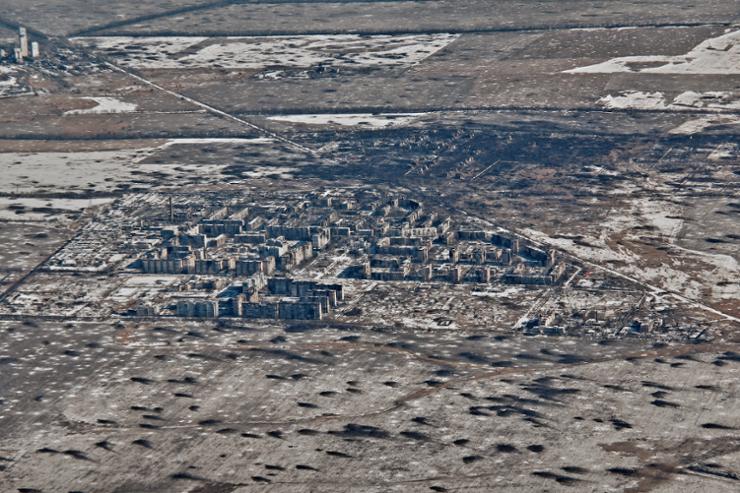The coal mining town’s fall raised new questions about Ukraine’s defensive positions along its southeastern front line as Russian forces advance winter.
Around 14,000 people lived in Vugledar before Russia invaded, making it one of Moscow’s more important gains in months of grinding advances across the East.
“The High Command permitted a manoeuvre to withdraw units from Vugledar to save personnel and military equipment and take up a position for further operations,” Ukraine’s Khortytsia group of troops, which operates in the area, posted on Telegram.
The unit said it had inflicted heavy losses on Russian forces but relentless attacks meant “there was a threat of encirclement”, forcing it to withdraw.
Vugledar is about 50 kilometres (30 miles) southwest of Donetsk city, the capital of a region Russia claims to have annexed.
Moscow’s forces have been trying to capture the town since the first weeks of its invasion, launched in February 2022.
There has been particularly bloody fighting for the town throughout the two-and-a-half-year war, and it has been largely flattened by Russian shelling.
In his evening address, Ukrainian President Volodymyr Zelensky did not confirm losing Vugledar but did say he had spoken to his military commanders “about the Donetsk region, about the areas where it is particularly difficult”.
“I am grateful to each of our combat brigades for their true resilience and courage,” Zelensky said.
“Every week, against all odds, our soldiers deliver a truly tangible defeat to the occupier, and the most important thing is to exhaust the enemy.”
Russian military bloggers had posted videos in recent days of troops raising Russian flags at various spots in Vugledar.
The defence ministry in Moscow has not officially claimed control of the town.
In its daily briefing Wednesday it said its forces had captured the small settlement of Verkhnokamyanske further north in the Donetsk region.
Extremely difficult
Given the military resources dedicated to the town, Vugledar has taken on symbolic importance for both Russia and Ukraine.
Around 100 civilians still lived there despite the heavy fighting in recent weeks, the Ukrainian governor of the Donetsk region, Vadym Filashkin, said Tuesday.
“The humanitarian situation in Vugledar is extremely difficult,” he said on Telegram.
The US-based Institute for the Study of War said it doubted whether Russia would gain a strategic advantage from the city’s capture.
“It is unclear if Russian forces will make rapid gains beyond Vugledar in the immediate future,” it said in a battlefield analysis report.
But Kyiv’s withdrawal raises wider concerns about its ability to hold the sprawling 1,000-kilometre (625-mile) front line against a Russian army with a manpower and ammunition advantage.
The capture of Vugledar comes as Russian troops try to advance on the logistics hub of Pokrovsk, further north.
Thousands of civilians have fled the mining city over the last month, with Russian forces now less than 10 kilometres away.
Pokrovsk was home to 60,000 people before Moscow launched its offensive, and its capture would be one of Russia’s most consequential in months.
Meanwhile, both sides reported people killed in strikes close to the front lines.
Ukraine said that a 69-year-old woman was killed in a Russian drone attack in the southern Kherson region, a day after a Russian attack on a market in the city of Kherson killed six people.
In the Russian region of Belgorod, multiple Ukrainian strikes killed at least two people and wounded 14, governor Vyacheslav Gladkov said.
A truck driver was killed when “two first-person view drones attacked two lorries driving along a highway”, he said on Telegram, posting photos of a burned-out lorry cab.
A later strike on an agricultural business killed one and wounded another 13, Gladkov added.







